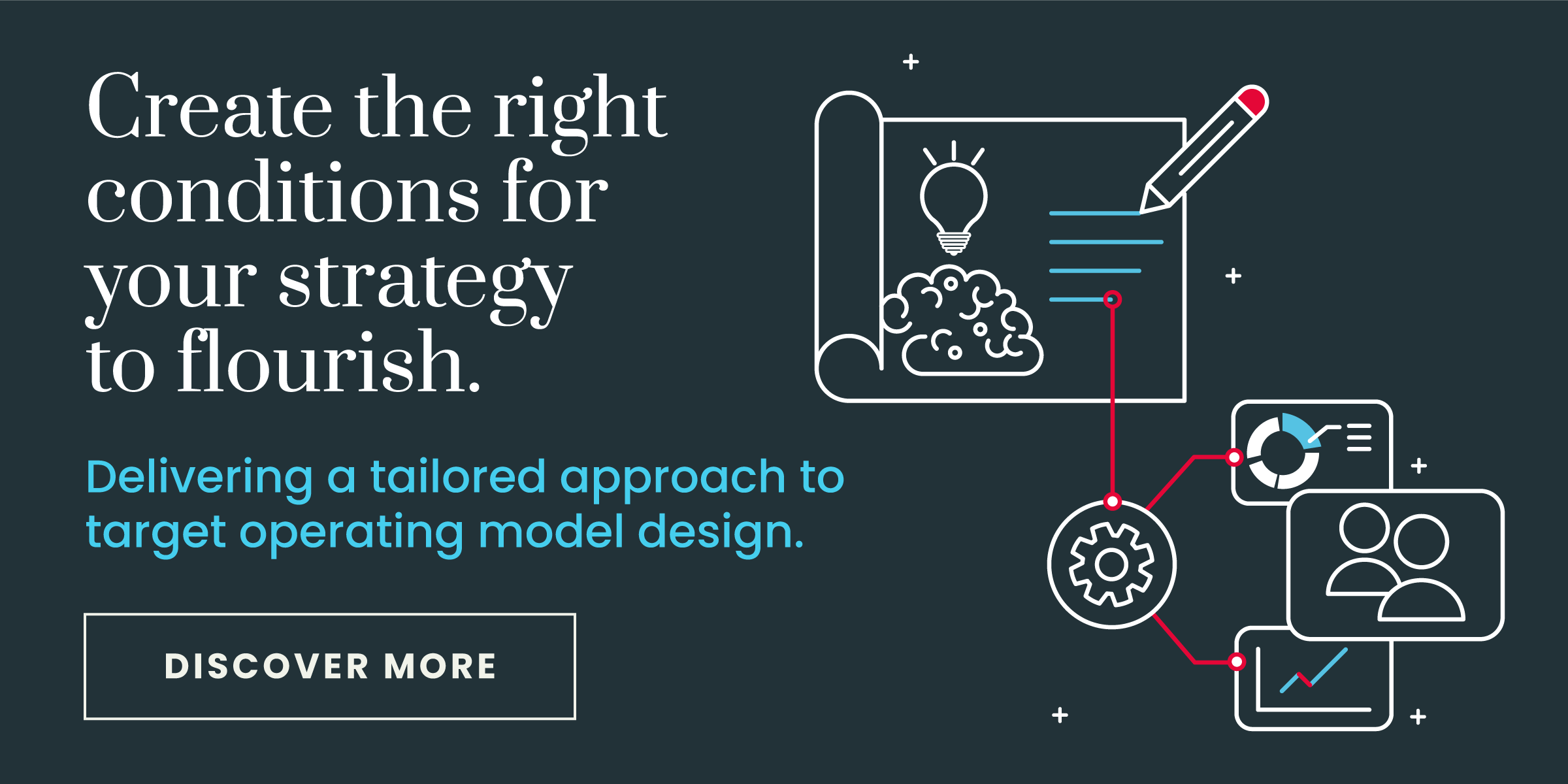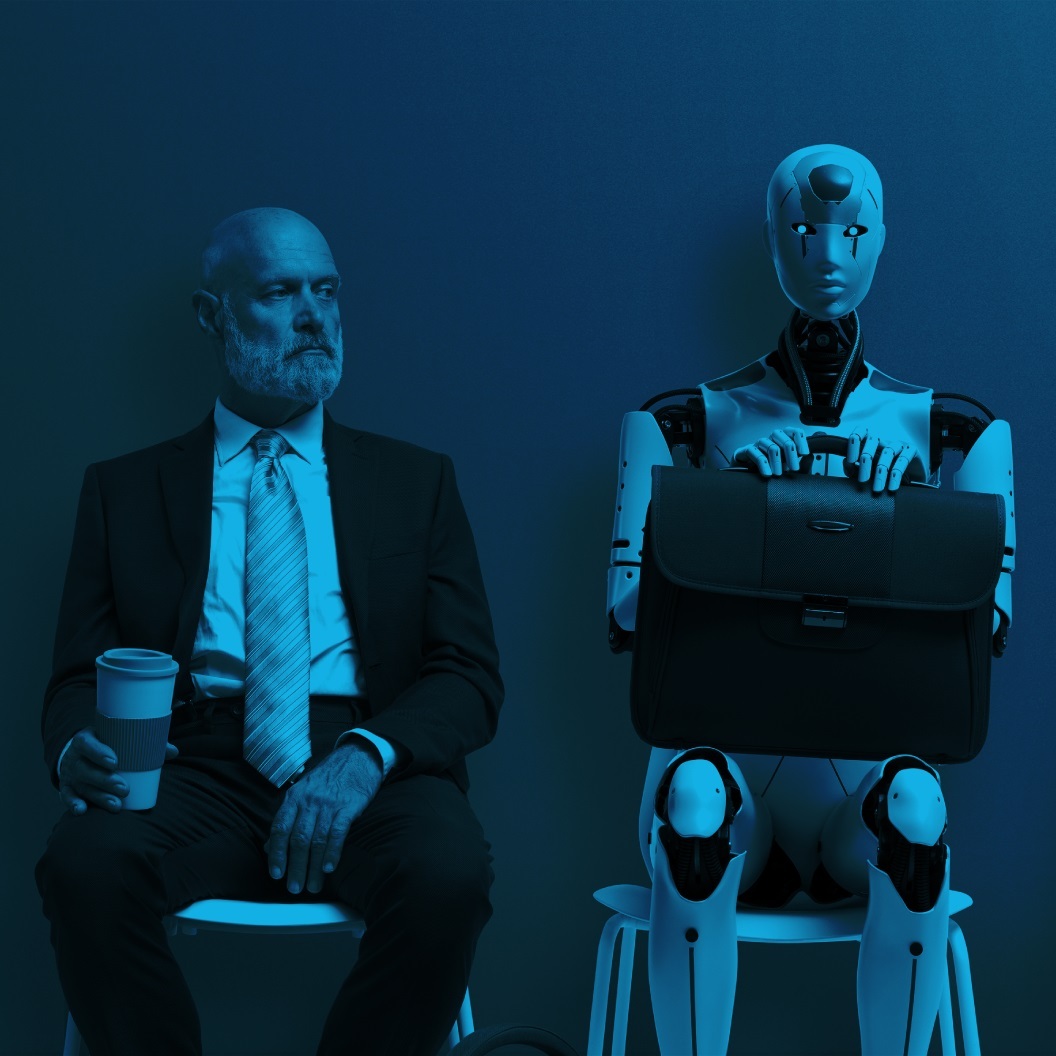Agility in Target Operating Model Design - an alternative approach
Target operating model designs have a fearsome reputation. People think of them as hugely complex and time-consuming exercises that requires a lot of resources, analysis, and consultation. They don't have to be - there is an alternative approach that brings flexibility, agility and will deliver maximum commercial value without upending an entire organisation.

Traditional approaches to target operating model design can be overly complex and seem insurmountable. In this article, we unlock the secrets of an alternative approach - one that brings flexibility, agility and will deliver maximum commercial value without upending an entire organisation.
A Target Operating Model (TOM) is a blueprint of how an organization needs to operate to deliver its plans and strategies. Its power lies in its scale, covering the entire organization and providing clarity on how things get done. But that scale can also be its downfall. When it comes to making changes to the model, the mammoth size of the task can seem insurmountable – with projects stretching on for months or even years.
This calls to mind the old expression: How do you eat an elephant? One bite at a time. But when it comes to TOM, you don’t really need to eat the whole elephant. You can choose just the best bit(e)s.
This is what we think of as an agile approach to TOM design. It focuses on strategic priorities, it’s anchored in customer value, facilitated through broad engagement, and enables adaptation.
> RELATED ARTICLE: Understanding the importance of Target Operating Model
TOM design doesn’t have to be a lengthy and invasive project
TOM projects have a fearsome reputation. People think of them as hugely complex and time-consuming exercises that requires a lot of resources, analysis, and consultation. How can this fit alongside the day-to-day of running the business? On top of that, we frequently hear from leaders concerned that a TOM will impose rigid and inflexible structures and rules that will limit their ability to adapt and innovate. But it doesn’t have to be this way. With a more agile approach to TOM design, the process can be quicker, less resource-intensive, and the result can be more flexible.
The most significant differences between a traditional approach to TOM projects and a more agile approach are:
- Scope - Traditional TOM projects tend to be comprehensive, aiming to redesign the entire organizational model across all functions and processes. An agile approach is more targeted, focusing on prioritized areas that will drive the most strategic impact.
- Sequence – Conventional TOM design starts with organizational structures and hierarchies, then aligns processes, roles, etc. An agile approach uses the business strategy as its foundation, asking – what are the critical capabilities required to enable the strategy? And then building in the support structure around those capabilities.
- Customer Centricity – While traditional TOM design is very inward looking, an agile target operating model design is grounded in maximizing value for your customers, aligning the operating model tightly to customer needs.
- Engagement Model - Classic TOM transformations rely heavily on a centralized design team, with limited stakeholder involvement until the end. Agile TOM redesigns bring stakeholders in far earlier, engaging them through workshops, feedback loops, and prototyping to ensure when the time comes for them to execute the new model they know it, understand it, and believe in it.
What does agility look like in TOM projects?
An agile approach to target operating model design can be built on five simple ideas. Let’s look at them in the context of a business example: A manufacturer of consumer goods is preparing to move from only selling to retail businesses to also selling direct to customers.
- Focus on the Core Strategic Drivers: If much of the business is staying the same, there’s no need to redesign the whole thing. The TOM should focus on the actions which are going to unlock the largest impact against the company’s strategic goals and represent the largest commercial value – in this case, the development of a direct retail operation.
This idea is number one in this list for a reason. The majority of the value of most TOM projects will come from a few key areas within the business. It is critically important to identify those areas quickly, and focus in on them ruthlessly. The main reasons that some redesign projects bloat into overlong exercises is a lack of focus.
- Start with Critical Capabilities: How are you going to make it happen? Identify the key capabilities required to deliver on the make-or-break elements of the strategy first – for example e-commerce sales & marketing and direct-to-consumer logistics – before aligning organizational structures, roles, and ways of working. This capability-led approach ensures the model is oriented around the activities that directly create value for customers.
- Align to the Customer: At the heart of your new operating model is optimising customer experience. What do they want and need from your new direct retail business? That might be rapid and reliable delivery, or online visibility of stock, or something else entirely. How can you manage things internally to avoid friction and maximise agility?
- Prioritise Buy-in and Engagement: Change can be hard to manage. Bringing your teams on this journey with you ensures their engagement and understanding so that you can move forward into the new operating model collaboratively and effectively.
- Maintain Adaptability: A rigid, static operating model could quickly become obsolete. Keeping an open mind enables you to adjust your model as you go – for example, to expand and change your logistics model as your retail operation scales and matures.
By focusing on high-impact priorities in an inclusive and adaptive way, companies can realize strategic benefits faster while building operating models that will stand the test of time.
What does it take to implement an agile approach to TOM design?
Agility in TOM design is not a magic bullet that guarantees success – partly because it’s more than just an approach; it’s a mindset and it requires a culture that supports and enables agility. That includes:
- Leadership – offering a clear and compelling vision and strategy, and empowering and supporting the teams
- Empathy – as a foundation to design solutions that work for customers and stakeholders
- Transparency – communicating and sharing information openly and honestly, creating a feedback loop that enables learning and improvement
- Empowerment – giving autonomy and authority to the teams to make decisions and deliver solutions, and holds them accountable for the results
- Learning – fostering a culture of continuous learning and improvement, and encouraging experimentation and innovation
Put agility first in your next operating model (re)design
Taking an agile approach to TOM design is a powerful and effective way to transform your organization. By being strategic and focused, you can achieve your goals and deliver value to your customers and stakeholders without tearing everything down and starting over.
However, agility is not a one-size-fits-all solution, and can only happen when you have the right mindset and culture to supports and enable it. If you’re wondering whether your organisation is ready to take an agile approach to TOM, ask yourself:
- Is your strategy well understood within the organisation?
- Have you spent time identifying the key capabilities that will make the difference between winning and losing?
- Are your teams engaged and well-supported?
If the answer to all these questions is yes, then you’ll likely be a good fit for agile TOM design – and for a more agile way to meet your strategic goals.
> RELATED ARTICLE: Leadership pitfalls to avoid when scaling a business


